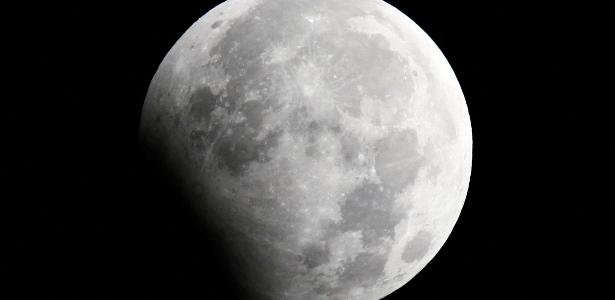
A piece of rocket propellant, which weighs three tons, finally hit the Moon around 9:25 a.m. (Brasilia time) this Friday (4). The impact marks the first unintentional lunar collision involving spacecraft debris. Prior to this, probes were carried out only from missions that landed on the lunar land.
Since February, it was being speculated that it could be the remains of a SpaceX rocket. Later, experts believed that the wreckage was part of a Chinese mission, which denies authorship. No one yet knows who owns the material that collided with the Moon.
According to experts, space junk ended up on the far side of the Moon (a satellite region we can’t see from Earth because of its synchronous rotation with our planet), making it impossible to observe the effect with ground-based telescopes. It is estimated that the rocket fragment hit an area close to Hertzsprung Crater, which has a diameter of 570 km.
We should have details about the impact in the coming weeks. According to the website SPACE.com, a NASA spacecraft orbiting the Moon, the LRO (Lunar Reconnaissance Orbiter), was probably not in a position to obtain information about the location.
Another possibility is for the Indian probe Chandrayaan-2, which also orbits our satellite, to take pictures of the spot so that we can learn about the impact and, perhaps, the origin of this debris.
Who is the owner?
in the first moment, Astronomer Bill Gray thought it was the remains of a SpaceX Falcon 9 rocketIn 2015, US government satellites were fired to take them into space.
A few days later, Gray recalculated and released an erratum on the Project Pluto website, a project he focused on space observations of the elements around Earth. he concluded that The space junk belonged to a Chinese rocket launched in 2014 as part of the Chang’e 5-T1 mission,
The Chinese government, for its part, denied that the space junk was part of a mission run by the country. A spokesman said the space equipment may have already fallen into Earth’s atmosphere and burned up.
Last Tuesday (the first), the United States Space Command, which detects space debris, reported that the debris may be of Chinese origin. According to the organization, the “upper stage” – one of the parts of the space launcher – of the Chinese rocket, launched in 2014, never left orbit. However, they do not explicitly state the origin of the equipment or the country responsible for the wreck.
*With information from Barbara Mannara and space.com



